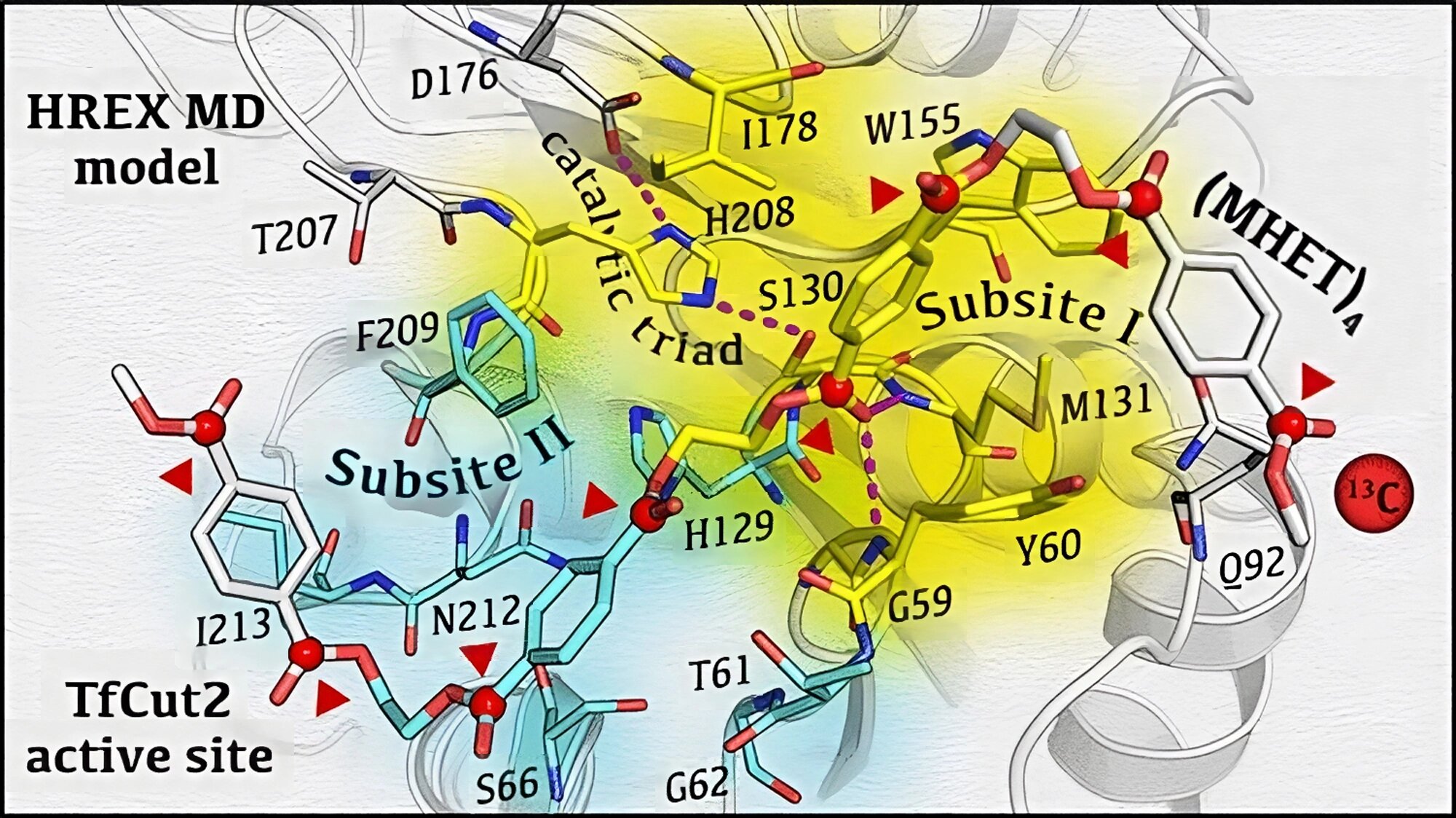Polyethylene terephthalate (PET) is a popular plastic used to manufacture single-use products such as plastic bottles and packaging due to its rigidity, transparency, and hardness. However, PET’s durability also makes it highly persistent in the environment, potentially taking several hundred years to degrade in the ocean. The biodegradation of PET by polyester hydrolases (or PETases) has been a promising method for eco-friendly plastic waste recycling. Researchers from the Institut de Ciències del Mar (ICM-CSIC) and the University of Leipzig have now uncovered the molecular-level mechanisms for the biodegradation of PET in a new study published in ACS Catalysis.
The study utilized a glass matrix to stabilize the enzymatic reaction intermediates and detect them in real-time using magnetic resonance spectroscopy. The researchers were then able to interpret the spectroscopic data and create a 3D molecular model of the enzymatic PET degradation process using a supercomputer. The study reveals that the interaction of only two PET subunits is sufficient for the enzyme to cut the polymer, and the enzyme can “walk” or slide on the PET chain to move from one cut to the other.
Francesco Colizzi, a leading author of the study, explains that the results “can be very useful for the industry” as it is the first time they can “see” the PET degradation process. The study’s molecular-level understanding of how PET interacts with enzymes could guide the design of new and improved systems for plastic waste recycling. PETases could also be applied to treat PET microplastics from washing microfleece textiles that end up in sewage treatment plants to preserve the marine environment.
In conclusion, the study’s molecular-level understanding of the PET degradation process by bacterial enzymes reveals new possibilities and a potential eco-friendly method for recycling plastic waste. The results can be useful for the industry to design new and improved systems for plastic waste recycling and for preserving the marine environment.



Leave a Reply